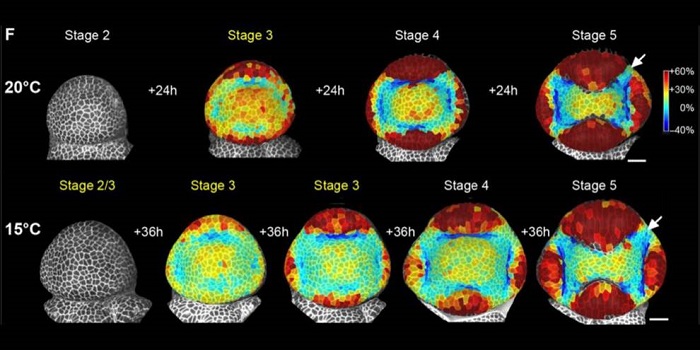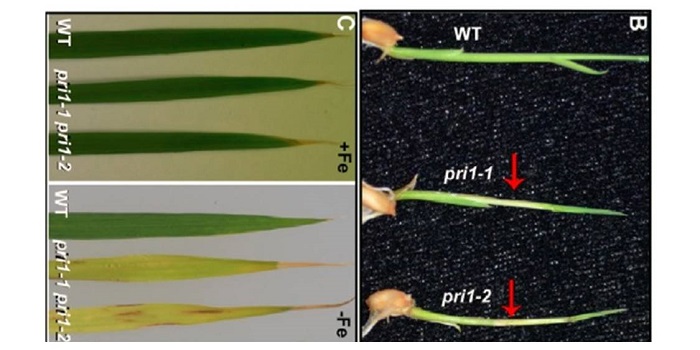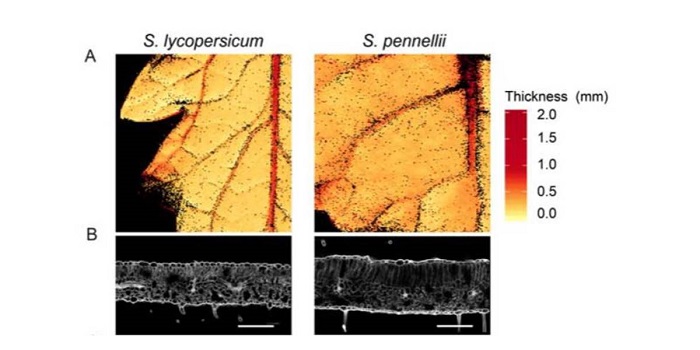
Seasonal regulation of petal number in Cardamine hirsute
Blog, Plant Science Research Weekly, Research, Research BlogFlower development, unlike flowering timing, is a robust process not much affected by seasonal variation, such that the number of floral organs in each flower can be predicted quite precisely for different plant families. Most Brasiccaceae family species have flowers with fours petals, however, Cardamine…

A multi-species synthesis of physiological mechanisms in drought-induced tree mortality
Blog, Plant Science Research Weekly, Research, Research BlogGlobal change forecasts include projections of severe droughts that could affect many forested biomes, largely influencing future energy and element fluxes. There are two physiological mechanisms associated with tree mortality in response to drought: hydraulic failure (inhibition of water transport)…

Silencing phosphoenolpyruvate carboxylase phosphorylation in a CAM plant
Blog, Plant Science Research Weekly, Research, Research BlogMany plants living in arid environments conserve water by taking up CO2 at night through the action of the enzyme phosphoenolpyruvate carboxylase (PPC); this process, which is widespread in the Crassulaceae family, is known as Crassulacean acid metabolism (CAM). The nocturnal activity of PPC is regulated…

POSITIVE REGULATOR OF IRON HOMEOSTASIS 1, OsPRI1, facilitates iron homeostasis ($)
Blog, Plant Science Research Weekly, Research, Research BlogZhang et al. showed that POSITIVE REGULATOR OF IRON HOMEOSTASIS 1 (OsPRI1), a bHLH transcription factor, is an interacting partner of the iron-binding sensor OsHRZ1. A loss-of-function mutation of OsPRI1 is responsible for a hypersensitive response to Fe deficiency. OsPRI1 works downstream of OsHRZ1…

Genetic architecture and molecular networks underlying leaf thickness in desert-adapted tomato
Blog, Plant Science Research Weekly, Research, Research Blog0 Comments
/
Plants with thicker leaves are better able to retain water and deal with water-limiting conditions. Coneva et al. explored the genetic basis for leaf thickness by comparing introgression lines of cultivated tomato (Solanum lycopersicum) and a species adapted to the desert (Solanum pennillii). They found…

Leaf Photosynthesis and Biomass Accumulation
Blog, Plant Physiology, Plant Physiology: On The Inside, Research, Research BlogImproving photosynthetic efficiency is a major target for increasing crop biomass production and yield potential. The canopy photosynthetic efficiency, which is determined by leaf area index, canopy architecture, and leaf photosynthetic properties, plays an important role in determining biomass accumulation.…

Venation, Water Transport and Photosynthetic Rate
Blog, Plant Physiology, Plant Physiology: On The Inside, Research, Research BlogLand plants lose vast quantities of water to the atmosphere during photosynthetic gas exchange. To supply this high demand for water an internal transport system comprised of xylem conduits irrigates the leaf. Selection for greater rates of photosynthesis and increased productivity is believed to have…

How Wheat Root Tips Break Through Tough Soil
Blog, Plant Physiology, Plant Physiology: On The Inside, Research, Research BlogSoils exhibiting high mechanical impedance as a result of soil compaction or drying, limit root elongation and adversely affect soil exploration and resource uptake. When soil mechanical impedance is increased, root elongation rate decreases within hours and may entirely cease, leading to significant…

Is Root Cortical Senescence Beneficial?
Blog, Plant Physiology, Plant Physiology: On The Inside, Research, Research BlogRoot cortical senescence (RCS) is a type of programmed cell death found in the Triticeae tribe. RCS is unrelated to the formation of root cortical aerenchyma or the loss of the root cortex due to secondary growth in dicots. Conceivably RCS may benefit the plant by reducing maintenance respiration in…

